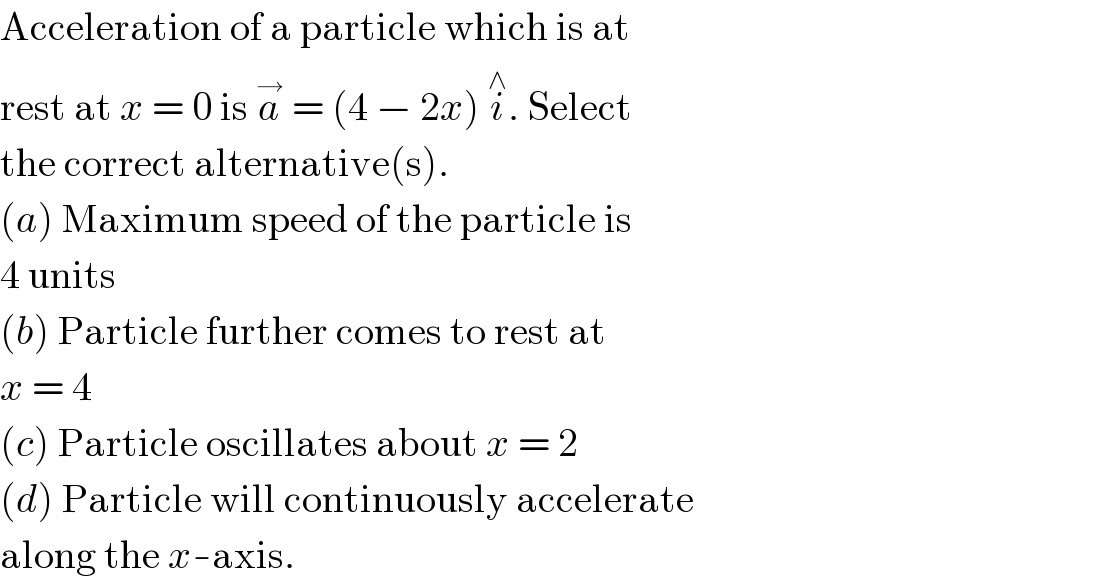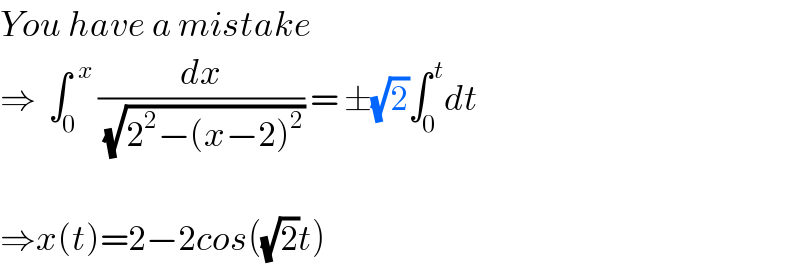Question Number 20842 by Tinkutara last updated on 04/Sep/17

Answered by ajfour last updated on 09/Sep/17
![((v_x dv_x )/dx)=4−2x ⇒ ∫_0 ^( v_x ) v_x dv_x =∫_0 ^( x) (4−2x)dx ⇒ (v_x ^2 /2)=4x−x^2 ⇒ v_x ^2 =2[4−(x−2)^2 ] ⇒ particle comes to rest at x=4. maximum speed at x=2 and is (v_x )_(max) =2(√2) units. ⇒ ∫_0 ^( x) (dx/( (√(2^2 −(x−2)^2 )))) = ±(√2)∫_0 ^( t) dt ⇒sin^(−1) (((x−2)/2))−sin^(−1) (−1)=±(√2)t ⇒ sin^(−1) (((x−2)/2))=±(√2)t−π/2 x=2+2sin (±(√2)t−π/2) or x=2−cos ((√2)t) is the equation of motion. ⇒ particle oscillates about x=2. (b) and (c) are the correct options.](https://www.tinkutara.com/question/Q20844.png)
Commented by ajfour last updated on 09/Sep/17

Commented by alex041103 last updated on 09/Sep/17

Commented by Tinkutara last updated on 04/Sep/17

